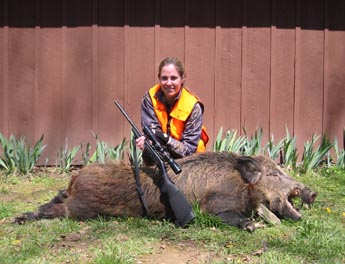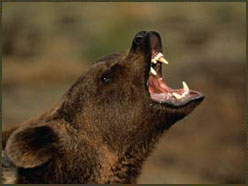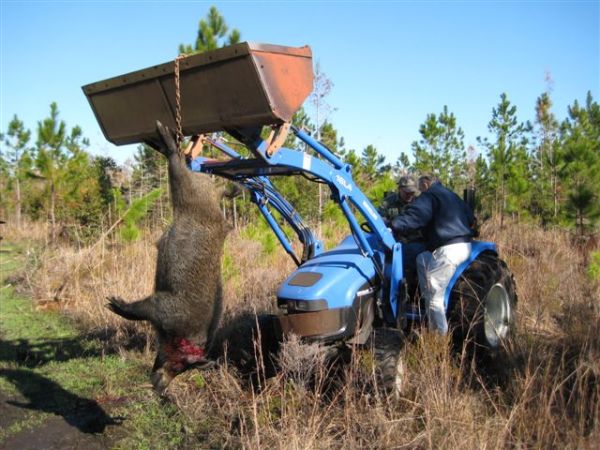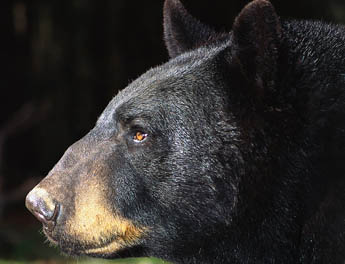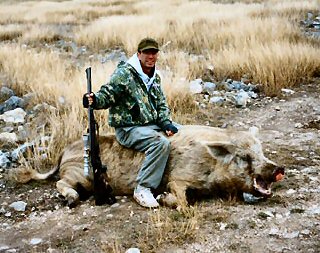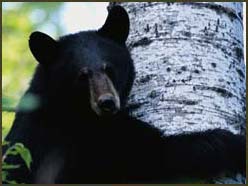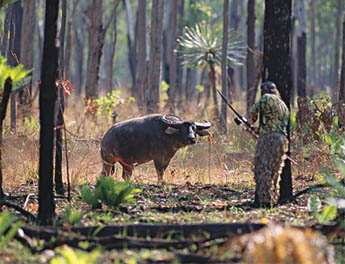John Phillips was in big trouble, and there wasn’t a thing I could do about it. He had just fired a shot at a wild hog with a revolver, but the bullet didn’t strike a vital area. As John ran forward to take another shot, he tripped and fell to the ground. Suddenly the boar whirled and charged, its tusks bared. John fired three times, but the pig kept coming. Finally, his next bullet hit pay dirt. The boar skidded to a halt and died 3 feet in front of John’s nose. I stood there with an unloaded gun, watching helplessly.
In all my years of hunting, this was the closest I’ve ever come to witnessing a serious injury. I’ve been bluff-charged by grizzlies and chased by rhinos, but this sobering incident in Alabama had all the makings of big trouble. John Phillips is an outdoor reporter, and he’s still writing about that incident that happened 15 years ago.
Wild hogs are popular quarry in many parts of the country, inhabiting 19 states. Tops are Texas, California and Florida, with growing populations in Oklahoma. Hawaii also has plenty of pigs on some islands.
** Many Hunting Styles**
Hog hunting is what you make it. There are preserves where pigs are released prior to the hunt and places where you can climb mountains all day and never see an animal. A couple of hunts in California and Oregon made me a believer in the need to be in shape. In some areas, pig hunting is a well-orchestrated commercial hunting effort; in others you can knock on a landowner’s door and easily get permission to shoot every hog you see. When wild hogs become too numerous, they can tear up plenty of ground as they root for food. They can also damage fences and in some cases spread swine diseases to domestic hogs.
I’ve hunted wild hogs in many places over the last 30 years, and I’m always amused by the notion that boars must be the primary target-the bigger the better. Many hunters see the tusks as trophies. I have no problem with that, but to me, an 80-pound sow or young boar is going to get my attention real quick. I see wild hogs as serious food items and schedule my hunts so there is always a supply of delicious pork in my freezer. Some of the bigger boars are so nasty you’d be lucky to make edible sausage out of them.
Various Hog Strains
The first pigs in North America escaped from Spanish settlers in Florida in the mid 1500s. In 1890, Russian boars were established in New Hampshire. Hogs have since interbred in many areas and continue to increase in number. Some sows have two litters a year, with an average of six young per litter.
Technically, there are three types of hogs in the United States: the Eurasian, or Russian, wild boar; feral hogs; and hybrids, which are crosses of the first two. Early on, settlers often turned domestic pigs loose on farms to fend for themselves; they would later be recaptured. Many of these animals got away and quickly formed wild populations. Others simply escaped from their pens.
[pagebreak] Pig-Hunting Strategies
Strategies for hunting pigs vary widely, depending on the area in which they’re being hunted. My favorite technique is the spot-and-stalk method, which is especially popular in California’s foothills and rolling country. You locate a herd of pigs early in the morning and immediately take off to intercept them before they get to cover. Hogs don’t like heat and will tend to loaf in shady areas during the day. An exciting option is jump-shooting, in which you walk slowly through known bedding spots and spook the hogs from their resting areas.
In Texas and much of the South, pigs are hunted from blinds and tree stands set near bait or well-used trails. Corn is especially effective. It’s said that a pig can smell a kernel of corn a mile away and will break his neck to get to it.
Hounds are also used to chase pigs, and in some instances hunters ride horses to keep up with the hounds. This can get real rough-and-tumble in a hurry and is not recommended for the faint of heart.
Field-Judging Hogs
Any animal can be dangerous if it’s cornered or wounded, but a wild boar has a formidable set of tusks that can inflict lots of damage. I have plenty of respect for the quarry, always mindful of the incident with John Phillips. It’s often said that pigs have poor eyesight, but I’ve found that they can see reasonably well at distances of up to 50 yards or more. Their sense of smell is superb, and they have excellent hearing.
Hogs are like bears in that it’s tough to judge their size, but pigs normally travel in groups, allowing you to compare them. A really big hog will stand out, and you’ll recognize a brute as soon as you see it. With a binocular, you can easily distinguish sows from boars, since the former have udders that are readily observed. If your heart is set on the biggest boar of the bunch and you’re watching them as they come to bait or a food plot, be patient. Wait until they’re all visible, since a boar is often the last to leave cover. If you want a sow for the table, try to distinguish which sows have piglets and which don’t. If you do shoot a sow that has piglets, however, other sows will adopt and raise them.
When I sit down to a wild pork roast for dinner, it absolutely amazes me that more people don’t hunt hogs. Another bonus is their availability year-round in most states, when other seasons are closed. I’ll take the “other white meat” as often as I can get it. And for those of you who haven’t tried it, wild hog doesn’t taste like chicken, either.
For information on Jim Zumbo’s books, visit www.jimzumbo.com.
